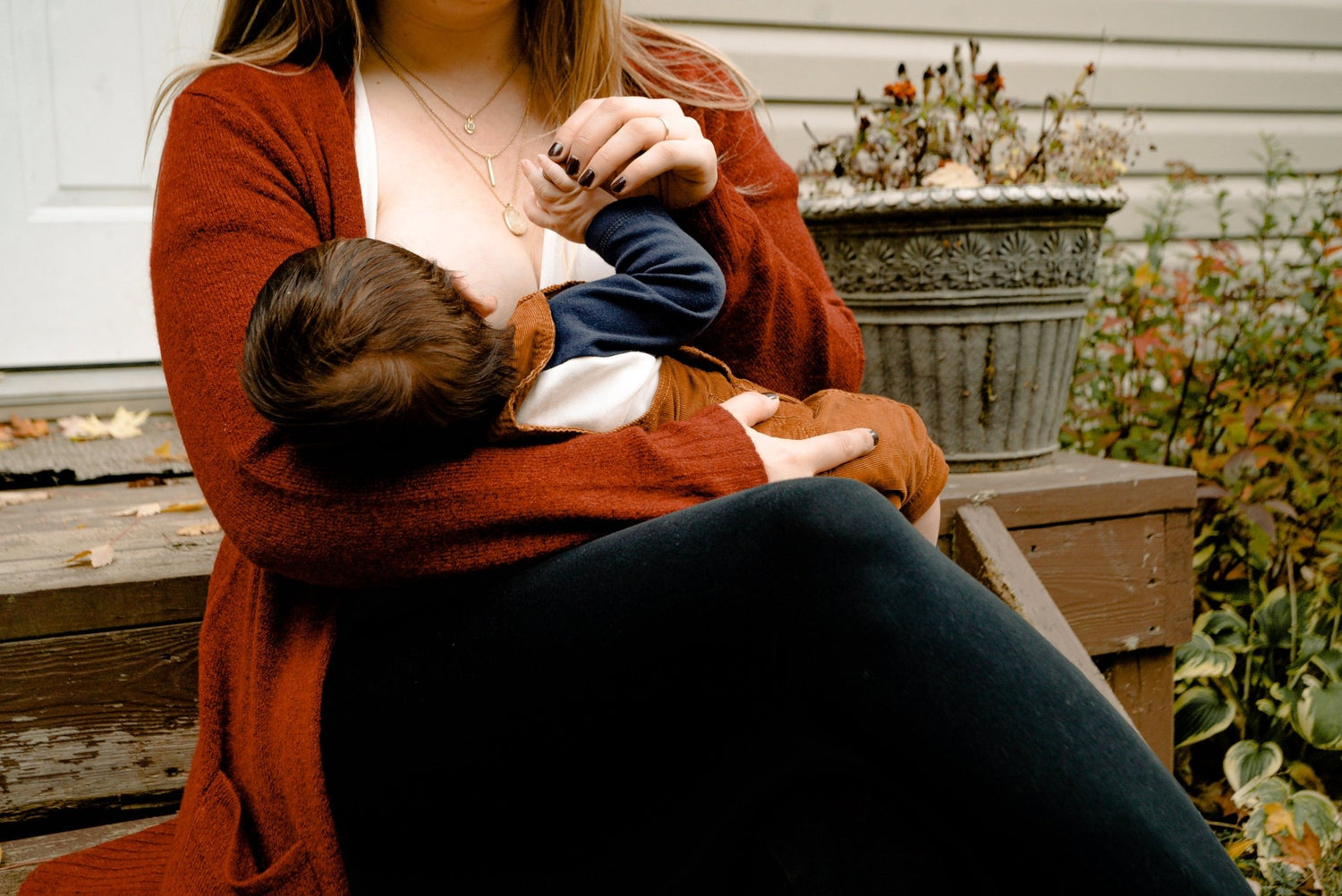Breaking the habit of breastfeeding: step-by-step instructions
For many mothers and babies, breastfeeding to sleep is a valuable moment of closeness and connection. But there comes a time in many families when you consider reconsidering this habit. In this blog post we will explain what breastfeeding is and how you can gently change it, as well as introduce alternative sleep aids that give you and your baby a peaceful night.
|
Table of contents: |
1. What exactly is breastfeeding to sleep?
Breastfeeding is used to help you fall asleep. Your baby drinks, then usually falls asleep and then falls asleep on the breast. This process creates a close bond between mother and child and can be calming for many babies. Bonding and happiness hormones as well as the sleep hormone melatonin are released during breastfeeding and make it super easy for your baby to fall asleep.
While breastfeeding can be helpful and useful in the first few months of a baby's life, many parents eventually come to a point where they think about how they can change this habit.
2. How can I prepare for the change?
Breaking the habit of breastfeeding can be important for your baby's development as he or she learns to fall asleep with a little less help. But it can also be a challenge that requires patience and empathy. However, before we get to the step-by-step guide to quitting the habit, let's clarify some important facts.
Your baby needs peace and relaxation to step into dreamland, which means he has to regulate himself. The ability to regulate such tiny people gradually develops in the first few years of life. Until your sweetheart can do this on their own, they need your help.
3. Does a baby have to be able to fall asleep independently?
We often hear and read about the myth that babies just need to learn how to fall asleep on their own so that they can cope at night without the help of mom and dad. Falling asleep independently is an important skill in the long term, but it does not have to be perfected in the first months and years of life. So it's entirely possible that you can enjoy a quiet and relaxing night appropriate for your age, even if you lovingly accompany your little mouse to sleep! A good successor to breastfeeding can be, for example, carrying or cuddling. Both versions give your baby closeness and security and help him fall asleep with a feeling of security.
4. How can I break the habit of breastfeeding to sleep step by step?
- Step 1: Understanding and Preparation
Before you start making a change, take time to reflect on your plan. How did it affect you and your baby? What is important for both of you when it comes to helping you fall asleep? Set realistic goals for the process. It is important to understand that breaking the habit of breastfeeding is not a sudden step, but a gradual transition that should be accompanied by a lot of patience, love and security.
- Step 2: Establish a sleep routine
Create a calming and reliable routine that prepares baby for sleep. This may include a warm bath, reading a story, or listening to soft lullabies. The routine signals to your baby that it is time to rest. The right time for the sleep routine and the sleep support is also essential for success.
- Step 3: Transitional objects and calming techniques
Incorporate stuffed animals, pacifiers, or soothing music to help your baby self-soothe. These objects can provide security and comfort as he adjusts to new sleeping habits. Above all, you should be prepared to accompany your baby lovingly and patiently through the process and to help him relax and fall asleep in a different way.
- Step 4: Consistency and Patience
Be predictable in your actions and expect possible setbacks. It's normal for your baby to take some time to get used to their new sleeping habits. Be patient, maximally affectionate and loving during the transition. This also means emotional and physical strain for you.
- Step 5: Support from partner and family
Encourage your partner and other family members to support you in this process. A shared approach can make it easier to break the habit of breastfeeding to sleep. This can start with planned breaks and support for you and end with the involvement of your partner or other significant others.
5. Which sleep aids are suitable instead of breastfeeding?
There are numerous alternative sleep aids you can consider. Which method suits you and your baby best depends on your individual needs and preferences. Here are some possible alternative sleep aids:
- Gentle rocking: Gently rocking to sleep provides both physical contact and a bit of movement. This helps many children fall asleep.
- Cuddling: Hugs and closeness convey security and comfort.
- Quiet background music: Relaxing music or sounds can help you fall asleep.
- Pacifier: A pacifier can be a useful substitute for breastfeeding.
- Soothing touch: Gentle caresses can relax your baby.
The choice of method should depend on your baby's needs. Observe what works best and be flexible in adjusting.
Breaking the habit of breastfeeding is a big step in the breastfeeding relationship between you and your baby. With patience, love and the right sleep aids, you can successfully manage this transition. Remember that every baby is unique and there is no "one size fits all" solution. Monitor your baby's needs and find the path that suits you.
Guest post by Andrea from Schlafen Leicht Gemacht :
Instagram: sleeping.leicht.gemacht
Website: https: //www.schlafenleichtgemacht.com/





